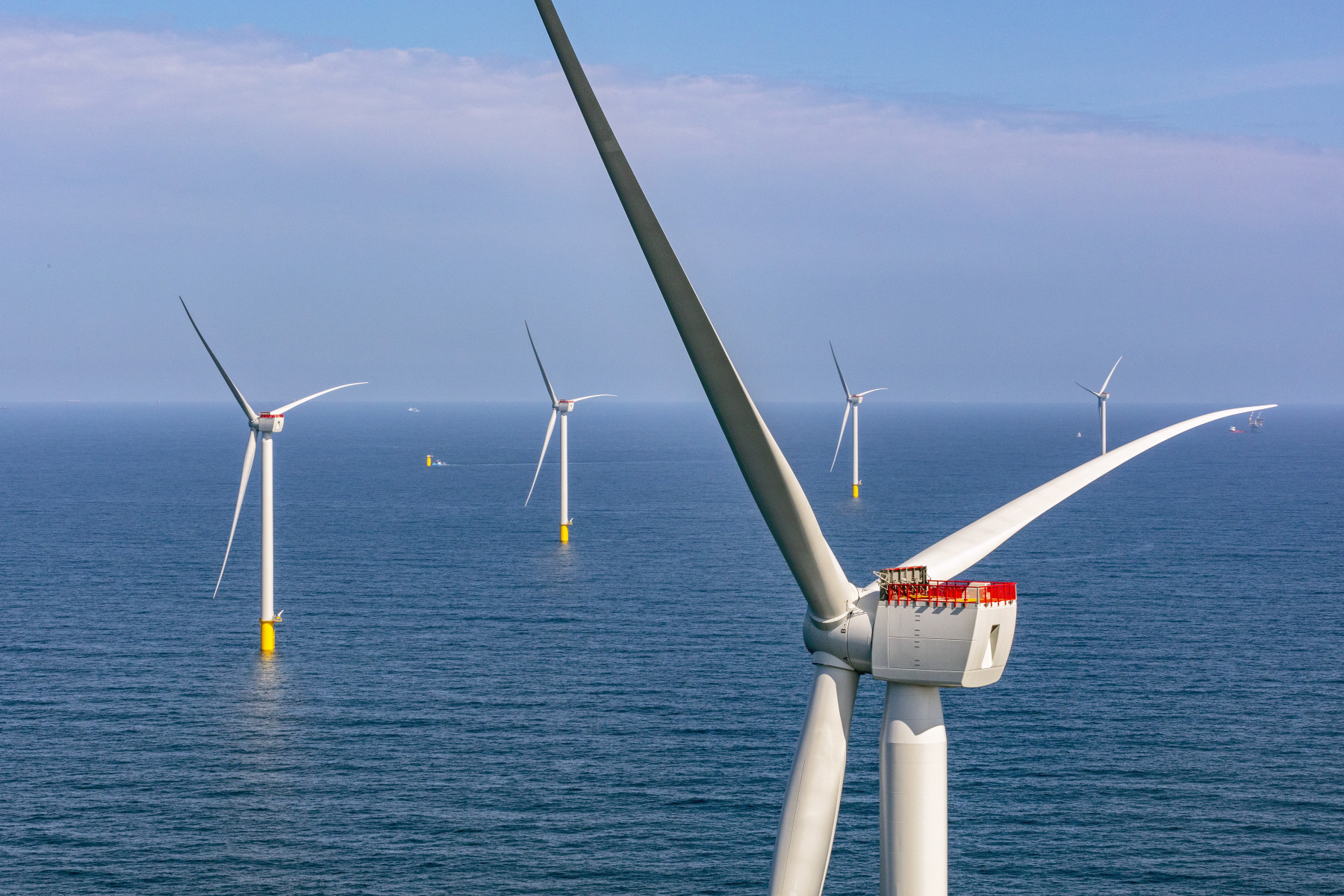The CrossWind consortium, including Shell and Eneco, has successfully delivered electricity to the Dutch mainland via the Hollandse Kust Noord project, which is expected to generate 3.3 TWh annually by year-end. This substantial contribution to renewable energy emphasizes the Netherlands' ambitious drive toward sustainable power.
The subsidy-free wind park is expected to reach its full production potential of generating 3.3 TWh per year by the end of the year. Amazon has already signed up to buy half of the project's energy, while Shell plans to use some of it to power a brand-new green hydrogen plant in Rotterdam.
But that's not all - the Netherlands is planning to add a whopping 1 GW of offshore wind capacity every year in the North Sea. With a target of 21 GW by 2030, the country is making serious moves towards renewable energy. That's enough to supply around one million households with clean, sustainable power.
With 69 wind turbines of 11 MW each, the wind farm sits 18.5 kilometers (11.5 miles) off the Dutch coast. Construction began in October 2022, and the first turbine was installed in April this year. The project's successful completion by the end of this year is part of the Dutch government's commitment to achieving 4.5 GW of operational offshore wind capacity by the end of 2023.
According to Arjan Dams of TenneT, the complete grid connection is now complete, extending from the offshore platform of the grid operator to the high-voltage substation near Beverwijk.
The Hollandse Kust Noord project will contribute substantially to the renewable energy sector in the Netherlands, and with the impressive wind turbines in place, it lays a strong groundwork for the country's transition to cleaner energy.
The offshore wind farm was meticulously designed to have minimal impact on birds, bats, and marine life. To achieve this, they created a corridor for birds by placing turbines far apart, used groundbreaking techniques to reduce the impact on marine mammals and life, and deployed natural reef structures on the seabed to enhance biodiversity.
Working with a team of scientists and experts, they developed and assessed numerous innovative solutions to address gaps in understanding offshore wind's ecological impact.
Photo: Eneco Newsroom



 US Signals Openness to New Trade Deal as Brazil Shows Willingness, Says USTR Greer
US Signals Openness to New Trade Deal as Brazil Shows Willingness, Says USTR Greer  Mizuho Raises Broadcom Price Target to $450 on Surging AI Chip Demand
Mizuho Raises Broadcom Price Target to $450 on Surging AI Chip Demand  Parasites are ecological dark matter – and they need protecting
Parasites are ecological dark matter – and they need protecting  Trello Outage Disrupts Users as Access Issues Hit Atlassian’s Work Management Platform
Trello Outage Disrupts Users as Access Issues Hit Atlassian’s Work Management Platform  EssilorLuxottica Bets on AI-Powered Smart Glasses as Competition Intensifies
EssilorLuxottica Bets on AI-Powered Smart Glasses as Competition Intensifies  Microsoft Unveils Massive Global AI Investments, Prioritizing India’s Rapidly Growing Digital Market
Microsoft Unveils Massive Global AI Investments, Prioritizing India’s Rapidly Growing Digital Market  Mexico Moves to Increase Tariffs on Asian Imports to Protect Domestic Industries
Mexico Moves to Increase Tariffs on Asian Imports to Protect Domestic Industries  Thousands of satellites are due to burn up in the atmosphere every year – damaging the ozone layer and changing the climate
Thousands of satellites are due to burn up in the atmosphere every year – damaging the ozone layer and changing the climate  Swimming in the sweet spot: how marine animals save energy on long journeys
Swimming in the sweet spot: how marine animals save energy on long journeys  EU Court Cuts Intel Antitrust Fine to €237 Million Amid Long-Running AMD Dispute
EU Court Cuts Intel Antitrust Fine to €237 Million Amid Long-Running AMD Dispute  S&P 500 Slides as AI Chip Stocks Tumble, Cooling Tech Rally
S&P 500 Slides as AI Chip Stocks Tumble, Cooling Tech Rally  China Adds Domestic AI Chips to Government Procurement List as U.S. Considers Easing Nvidia Export Curbs
China Adds Domestic AI Chips to Government Procurement List as U.S. Considers Easing Nvidia Export Curbs  Gulf Sovereign Funds Unite in Paramount–Skydance Bid for Warner Bros Discovery
Gulf Sovereign Funds Unite in Paramount–Skydance Bid for Warner Bros Discovery  Moore Threads Stock Slides After Risk Warning Despite 600% Surge Since IPO
Moore Threads Stock Slides After Risk Warning Despite 600% Surge Since IPO 






























